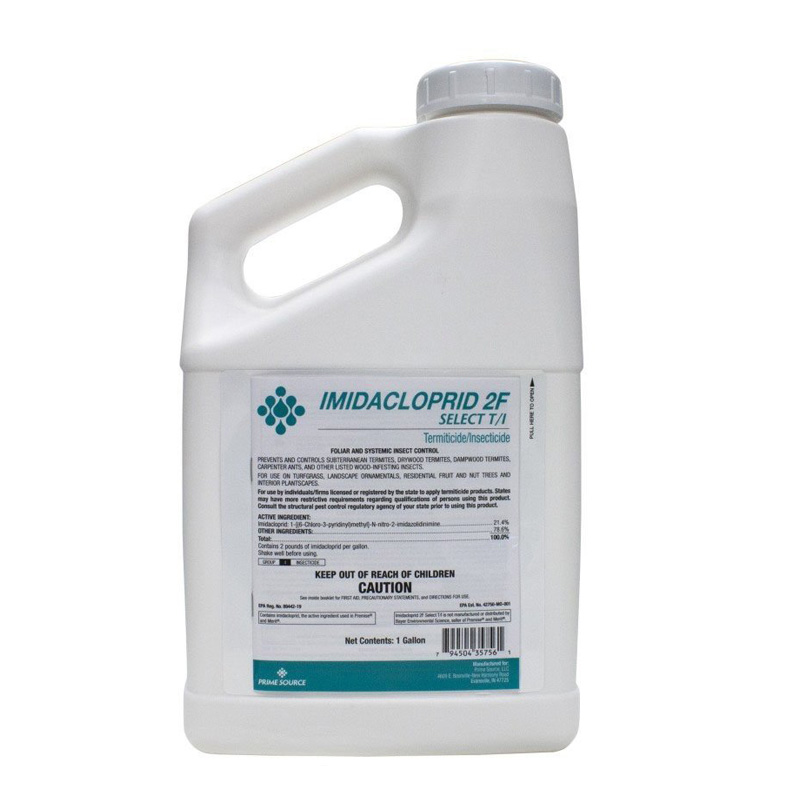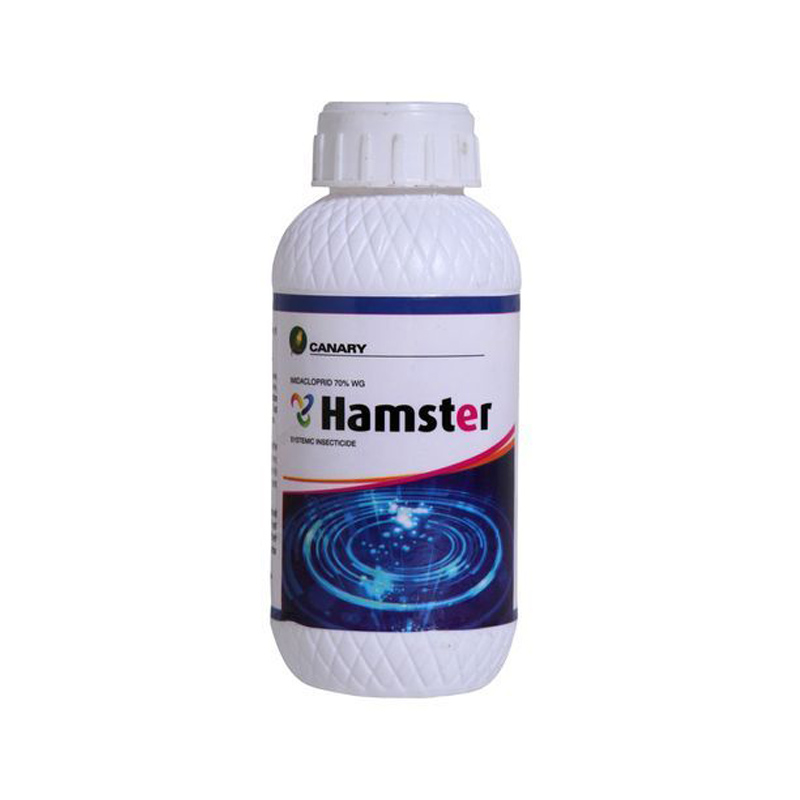1. Acetamiprid
Basic Information:
Acetamiprid is a new broad-spectrum insecticide with a certain acaricidal activity, which acts as a systemic insecticide for soil and foliage. It is widely used in the control of rice, especially vegetables, fruit trees, tea aphids, planthoppers, thrips, and some lepidopteran pests.
Related reading: Emamectin Benzoate vs. Imidacloprid
Application method:
50-100mg / L concentration, can effectively control cotton aphid, rapeseed meal, peach small heartworm, etc., 500mg / L concentration can be used to control light moth, orange moth and pear small heartworm, and can kill eggs .
The acetamiprid is mainly used to control pests by spraying, and the specific use amount or the amount of the drug varies depending on the content of the preparation. On fruit trees and high-stalk crops, 3% to 2,000 times of preparations are usually used, or 5% of preparations are 2,500 to 3,000 times, or 10% of preparations are 5,000 to 6,000 times, or 20%. The preparation of 10000 ~ 12000 times liquid. Or 40% water dispersible granules 20 000 ~ 25,000 times liquid, or 50% water dispersible granules 25000 ~ 30,000 times liquid, or 70% water dispersible granules 35 000 ~ 40 000 times liquid, evenly spray; in grain and cotton oil On dwarf crops such as vegetables, generally 1.5 to 2 grams of the active ingredient is used per 667 square meters, and 30 to 60 liters of water is sprayed. Uniform and thoughtful spraying can improve the control effect of the drug.
The main purpose:
1. Chlorinated nicotine insecticides. The medicament has the characteristics of wide insecticidal spectrum, high activity, small dosage, long-lasting effect and quick effect, and has the functions of contact and stomach toxicity, and has excellent systemic activity. Hemiptera (Aphids, spider mites, whiteflies, mites, scale insects, etc.), Lepidoptera (Plutella xylostella, L. moth, P. sylvestris, P. sylvestris), Coleoptera (Echinochloa, Corydalis) And the total wingworm pests (thuma) are effective. Since the mechanism of action of acetamiprid is different from that of currently used insecticides, it has special effects on pests resistant to organophosphorus, carbamates and pyrethroids.
2. It is efficient for Hemiptera and Lepidoptera pests.
3. It is the same series as imidacloprid, but its insecticidal spectrum is wider than that of imidacloprid, and it has good control effect on aphids on cucumber, apple, citrus and tobacco. Due to the unique mechanism of action of acetamiprid, it has a good effect on pests that are resistant to pesticides such as organophosphorus, carbamate, and pyrethroids.
2. Imidacloprid
1. Basic introduction
Imidacloprid is a high-efficiency insecticide of nicotine. It has broad-spectrum, high-efficiency, low toxicity, low residue, pests are not easy to produce resistance, and it is safe for humans, animals, plants and natural enemies. It has contact, stomach poison and systemic absorption. Wait for multiple effects. After the pests are exposed to the agent, the normal conduction of the central nervous system is blocked, causing paralysis to die. The product has good quick-acting effect, and has high control effect 1 day after the medicine, and the residual period is up to 25 days. The efficacy and temperature are positively correlated, the temperature is high, and the insecticidal effect is good. Mainly used to control sucking mouthparts pests.
2. Function characteristics
Imidacloprid is a nitromethylene-based systemic insecticide and acts as a acetylcholinesterase receptor for nicotinic acid. It interferes with the pest’s motor nervous system and causes chemical signal transmission to fail, without cross-resistance. It is used to control sucking mouthparts pests and their resistant strains. Imidacloprid is a new generation of chlorinated nicotine insecticide with broad spectrum, high efficiency, low toxicity, low residue, pests are not easy to produce resistance, safe for humans, animals, plants and natural enemies, and has contact, stomach poison and systemic absorption. Multiple pharmacological effects. After the pests are exposed to the agent, the normal conduction of the central nervous system is blocked, causing paralysis to die. It has good quick-acting effect, and it has high control effect one day after the medicine, and the residual period is about 25 days. The efficacy and temperature are positively correlated, the temperature is high, and the insecticidal effect is good. Mainly used to control sucking mouthparts pests.
3. How to use
It is mainly used for the prevention and control of sucking mouthparts pests (can be used with low-temperature rotation of acetamiprid – low temperature with imidacloprid, high temperature with acetamiprid), prevention and control such as aphids, planthoppers, whiteflies, leafhoppers, thrips It is also effective against certain pests of Coleoptera, Diptera and Lepidoptera, such as rice weevil, rice negative worm, and leaf miner. But not effective against nematodes and red spiders. Can be used in rice, wheat, corn, cotton, potatoes, vegetables, beets, fruit trees and other crops. Due to its excellent systemic properties, it is particularly suitable for application by seed treatment and granulation. Generally, the active ingredient is 3~10 grams, sprayed with water or seeded. The safety interval is 20 days. Pay attention to the protection when applying the medicine, prevent contact with the skin and inhalation of powder and liquid medicine. Wash the exposed parts with water after use. Do not mix with alkaline pesticides. It is not advisable to spray under strong sunlight to avoid reducing the efficacy.
Control pests such as Spiraea japonica, apple mites, peach aphid, pear hibiscus, leaf roller moth, whitefly, and leafminer, spray with 10% imidacloprid 4000-6000 times, or spray with 5% imidacloprid EC 2000-3000 times . Prevention and control: You can choose Shennong 2.1% cockroach gel bait.


Differences Between Acetamiprid and Imidacloprid
Acetamiprid and imidacloprid are both neonicotinoid insecticides, a class of chemicals that act on the nervous system of insects. Despite their similar mode of action, they have differences in their chemical properties, spectrum of activity, usage, and environmental impact. Here’s a detailed comparison:
Chemical Properties
Acetamiprid:
Chemical Structure: Acetamiprid is a chloronicotinyl compound.
Water Solubility: Highly soluble in water.
Mode of Action: Acetamiprid works by binding to nicotinic acetylcholine receptors in insects, causing overstimulation of the nervous system, leading to paralysis and death.
Imidacloprid:
Chemical Structure: Imidacloprid is a nitroguanidine neonicotinoid.
Water Solubility: Moderately soluble in water.
Mode of Action: Imidacloprid also binds to nicotinic acetylcholine receptors but has a slightly different binding affinity compared to acetamiprid, which may affect its potency and spectrum of activity.
Spectrum of Activity
Acetamiprid:
Effective against a broad range of sucking pests such as aphids, whiteflies, and certain beetles.
Often used in crops like vegetables, fruits, and ornamentals.
Known for its systemic and contact action, providing both immediate and residual control.
Imidacloprid:
Effective against a wide range of sucking and some chewing pests including aphids, whiteflies, termites, and some beetle species.
Commonly used in various crops, turf, and ornamental plants.
Highly systemic, providing long-lasting protection as it can be absorbed by plant roots and distributed throughout the plant.
Usage and Application
Acetamiprid:
Available in various formulations including sprays, granules, and soil treatments.
Often used in integrated pest management (IPM) programs due to its lower toxicity to beneficial insects compared to some other neonicotinoids.
Imidacloprid:
Available in formulations such as seed treatments, soil applications, and foliar sprays.
Widely used in agriculture, particularly in crops like maize, cotton, and potatoes, as well as in veterinary applications for flea control on pets.
Environmental Impact
Acetamiprid:
Generally considered to have a lower risk to non-target species, including bees, compared to some other neonicotinoids, though it still poses risks and should be used with caution.
Moderately persistent in the environment, with a relatively shorter half-life in soil compared to imidacloprid.
Imidacloprid:
Known for its potential adverse effects on non-target organisms, particularly pollinators like bees. It has been implicated in colony collapse disorder (CCD).
More persistent in the environment, leading to concerns about groundwater contamination and long-term ecological effects.
Regulatory Status
Acetamiprid:
Generally less restricted compared to imidacloprid, but still subject to regulations to minimize environmental and health risks.
Imidacloprid:
Subject to stricter regulations and, in some regions, bans or severe restrictions on certain uses due to its impact on bees and aquatic invertebrates.
Conclusion
While both acetamiprid and imidacloprid are effective neonicotinoid insecticides, they differ in their chemical properties, spectrum of activity, and environmental impacts. Acetamiprid is often chosen for its lower toxicity to beneficial insects and slightly better environmental profile, whereas imidacloprid is favored for its broad-spectrum efficacy and long-lasting protection but comes with higher environmental and non-target risks. The choice between these two should consider the specific pest problem, crop type, and environmental considerations.
Post time: Oct-24-2019






